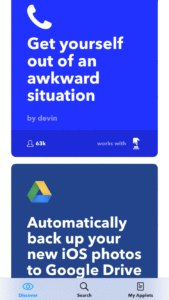How to keep track of news in your own scientific field
…or, how to make your own research field visible to others by acting like a news editor and finding the good stuff to share on LinkedIn and Twitter.
As a specialised professional you have many reasons to follow, like, and share developments in your own field on social media. Your perspective, your angle, and your rendering of an ongoing shared project is important to your close colleagues. And the following, liking and sharing puts yourself on the map with others in your wider network.
In research groups in institutions, the scanning and monitoring of developments in a field can take on many forms. An astrophysics group I followed in Copenhagen a few years ago based theirs on updates from the global electronic scientific paper archive ArXiv and a subsequent elaborate meeting system.
Yet not many individual scientists and professionals set up their own system to find and share useful content. And this is where a news tracking and monitoring routine can be worthwhile.
There is no reporting instinct
Humans have an instinctive reaction to news. We look up when things happen. But what we humans don’t have is an instinct for reporting it.
Reporters and editors experience this all the time: Off-duty, or focused on something else, something suddenly happens that is relevant to the reporter’s beat or specialty. But she doesn’t see it as a story until she subsequently reflects upon it, after the event. Sometimes it is too late.

Photo: Esther Vargas, Creative Commons License
The point is that in order to think about actually reporting a happening as a potential story, you have to consciously shift your role back to your job as a reporter.
Scientists and other professionals who communicate complex research with long term, introverted projects face the same problem as reporters and editors.
You have to jump out of your primary role as scientist and professional to attune yourself to monitoring your field for new developments and sharing or reporting it to others. The role and mindset of doing science or other concentrated, long projects, can be at odds with the role and mindset of sharing and communicating with others. Even within your own field.
But by using some of the tricks of the newsroom trade and by setting up a good news tracking routine, you can get around this problem. A good routine helps keep you on track, attuned to what is new, on a daily basis. As a bare minimum, it will at least allow you to keep track of what everyone else in your field considers news.
Here below is a list of some newsroom tracking tricks for reporters that can be applied to other professional fields, including scientists:
How to find news
In science and research you will often be working from the desk. So the first tips are an inspiration for your daily office routine. Use half an hour at the beginning of your working day to keep a tab on what is happening via your desktop.
On screen or in the office:

Feedly doesn’t have a sexy interface. And the stuff you get up via your google alerts may look weird. But it works.
- Information streams. This is standard stuff. But you should make a system for it. Press releases, agendas and reports from your own institution, company, interest group or association. Sign up for the newsletters, news groups and events groups and get it by e-mail. Then add as many of them as you can to Google alerts. Aggregate the alerts on to a reader like Feedly. Then do your network a service and share news directly on Twitter via the Feedly app.
- Planned events on online calendars related to your field: Meetings, guest lectures and panels, VIP visits. As above: Google alert. Feedly. Share.
- Other niche media and platforms related to your own: Take your angle on a story from another niche media.
- Web surveillance: Set up tailored news feeds on a Feedly reader and with Google Alerts on your personalised keywords.
- Arbitrage. Arbitrage is the simultaneous buying and selling of commodities in different markets with different prices to make a profit. News and social media work in the same way. Take a story on one platform, where your followers are not, and share it on another platform, where they are. There are many good combinations of social media for this kind of ‘arbitrage’, and each professional field will be different. An app for your smartphone called IFTTT which is short for If This Then That is perfect for this. More on this below.
Off screen or via smartphone
This is where it gets interesting. The tips below are also originally listed for reporters. But with modification, they can be used by anyone who wants to think outside the box. The term ‘stories’ below can mean updates, blog postings or even ‘opportunities for collaboration with colleagues’. whether it is in the office or via a smartphone while travelling.
- Ideas from yourself, and others. This one goes without saying! But keep a tab on your story, share ideas on a google document, or note app on your phone.
- The ‘news sense’. Wherever you go in the course of your working life, and sometimes outside of it, you will hear about stuff that is relevant to your organisation, field or network. Some of it may be a story worth sharing.
- The good picture is also a good story. The best stories are often wherever there is an arresting image. Take it! And get the story afterwards.
- Interesting colleagues that are doing something of wider interest, that you might know. He is a sports star in his free time. She claims to be an ‘ethical hacker’. He plans to ride his bike backwards across Siberia.
- Thinking ahead: Which global events need coverage from the standpoint of your institution or field?
- Use your friends! Get tips for stories from stuff you hear from your network
- Things that you just suddenly wonder about: Why is my net connection not working?
- Things that happen at social events
- Things that you notice on message boards

The IFTTT app on your phone. Use IFTTT to sync the tracking and the sharing
The best, and sneakiest! is the last tip.
- IFTTT (If This Then That) is for the moments that you are stuck in public transport with only your smartphone for company. Using tailored ‘recipes’ IFTTT uses what it calls ‘recipes’ to automate the arbitrage of different social platforms. Its recipes automatically trigger an action in one platform if something happens in another. Like automatically sending you a text message if someone tweets in your geographical vicinity. Or sharing on Twitter what you post on LinkedIn. Use your commuting time to optimize your IFTTT on your phone.
Your news tracking routine will do you and everyone a favour:
For you, the favour is that by setting aside half an hour every morning to monitor the news like an editor does, you can achieve the peace of mind for the rest of your day to focus on your own important projects.
As for your colleagues and wider network, well, you are doing them a favour too. Without real people like you, they would be at the mercy of irritating bots and algorithms whenever they opened their social media accounts, serving them endless automated social responses, machine-scraped headlines, and spammy follows/unfollows from lifestyle gurus.
A good news tracking routine won’t save them, or you, from all of the bots and marketing. But hopefully a good routine can keep the news that you see more meaningful.
I am looking forward to any comments you may have on this! Feel free to either comment here or e-mail to mike@mikeyoungacademy.dk.



Skriv en kommentar
Want to join the discussion?Feel free to contribute!